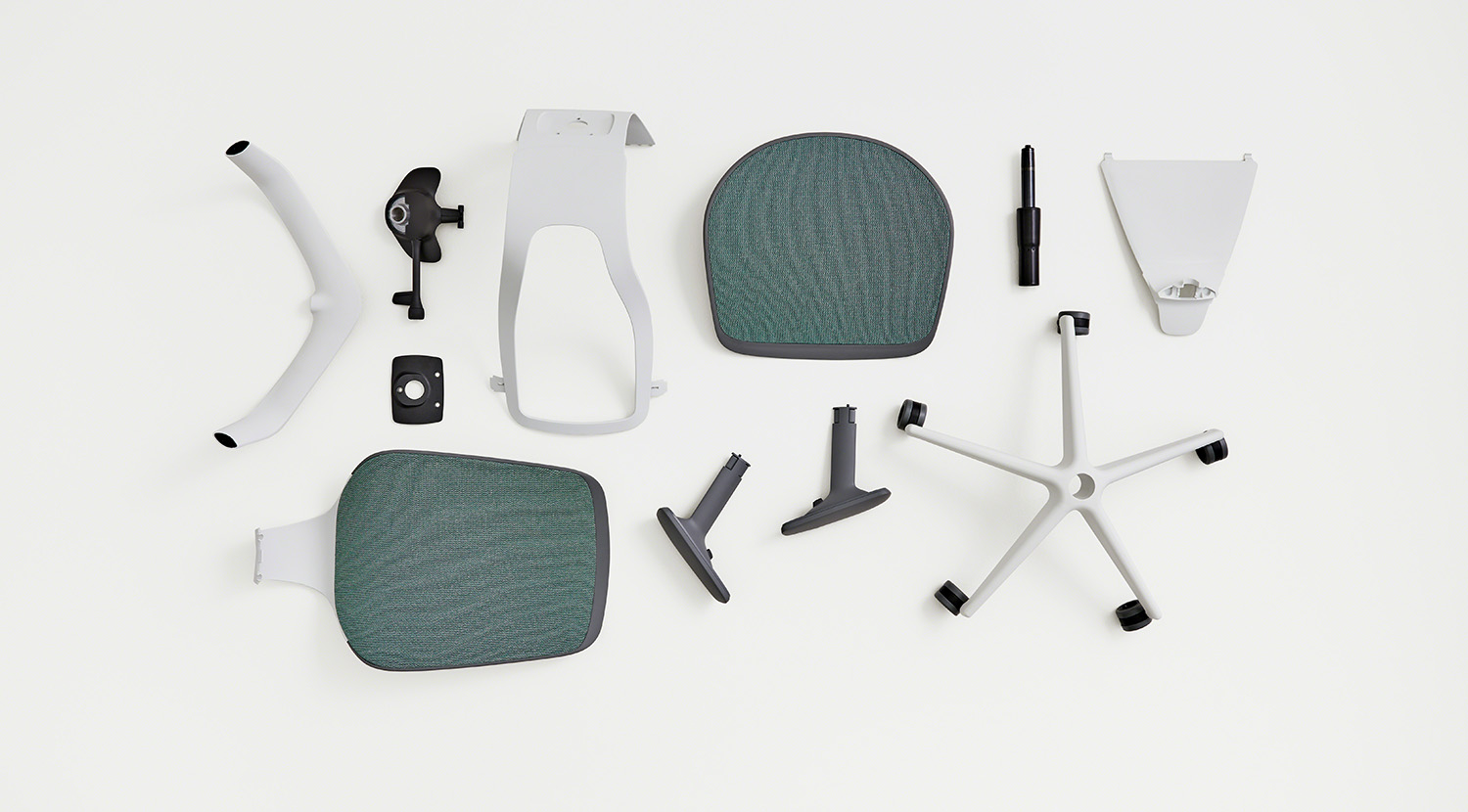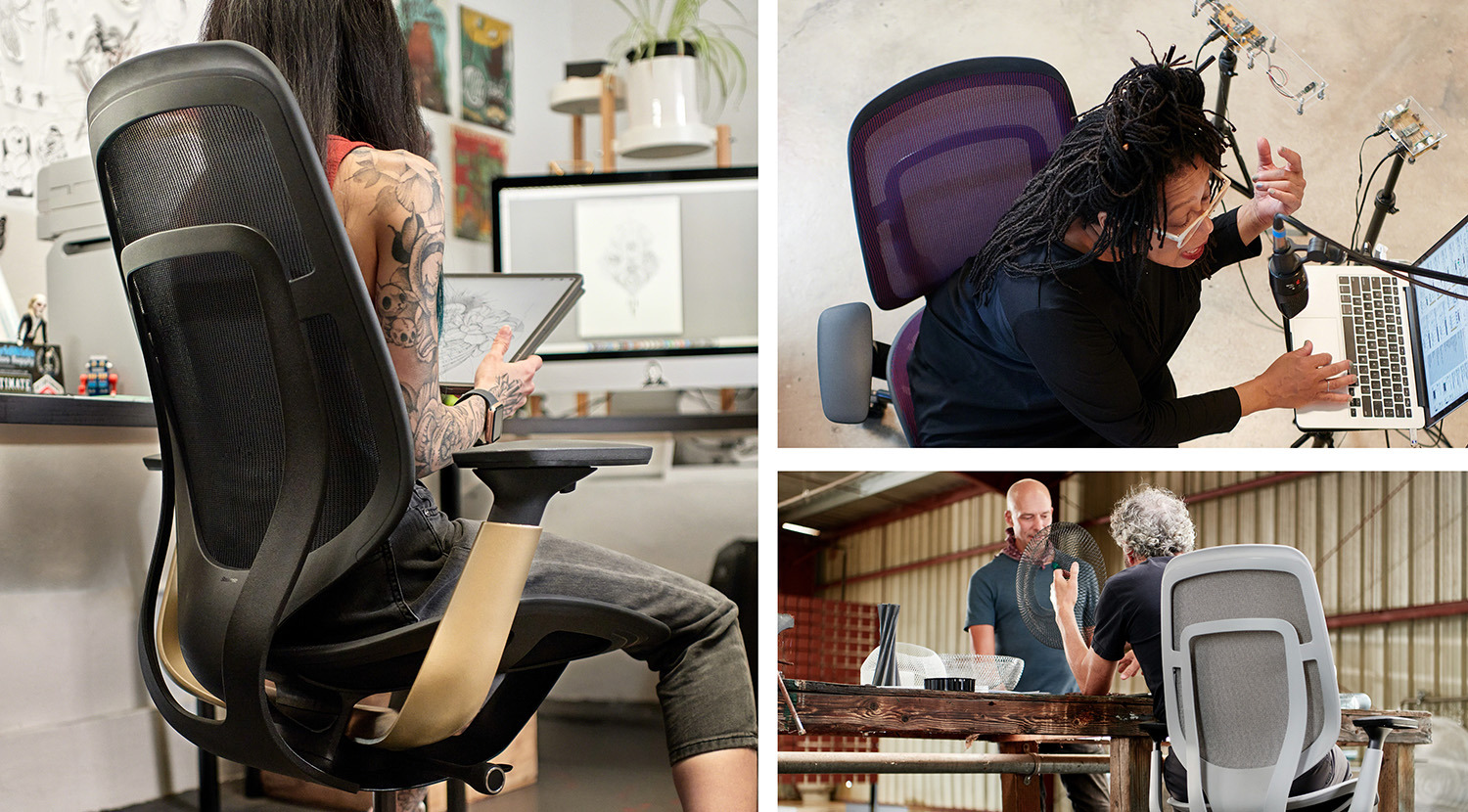As the world spent countless hours on video calls throughout the pandemic, sitting in chairs of various quality, the Steelcase Design Studio already recognized it was time to create the next generation of ergonomic chairs.
People were working in new ways before the crisis and, as people became more aware of the need for comfort, the team understood they needed to create a new kind of chair.
“You only notice ergonomics when you’re uncomfortable,” notes James Ludwig, vice president of global design and engineering at Steelcase. “But the best user experience is one you don’t notice. We wanted to design a chair that makes comfort effortless, that responds and moves as you do, that fits all types of bodies. And we wanted to give it a presence that looks great in the home or the workplace.”
That vision led to Steelcase Karman, a new approach that goes beyond traditional mesh chairs. Its 21st century design and engineering naturally responds to a body’s movement and weight, providing unparalleled comfort. It is designed to be more comfortable than leading mesh chairs, putting less pressure on your seat and back.
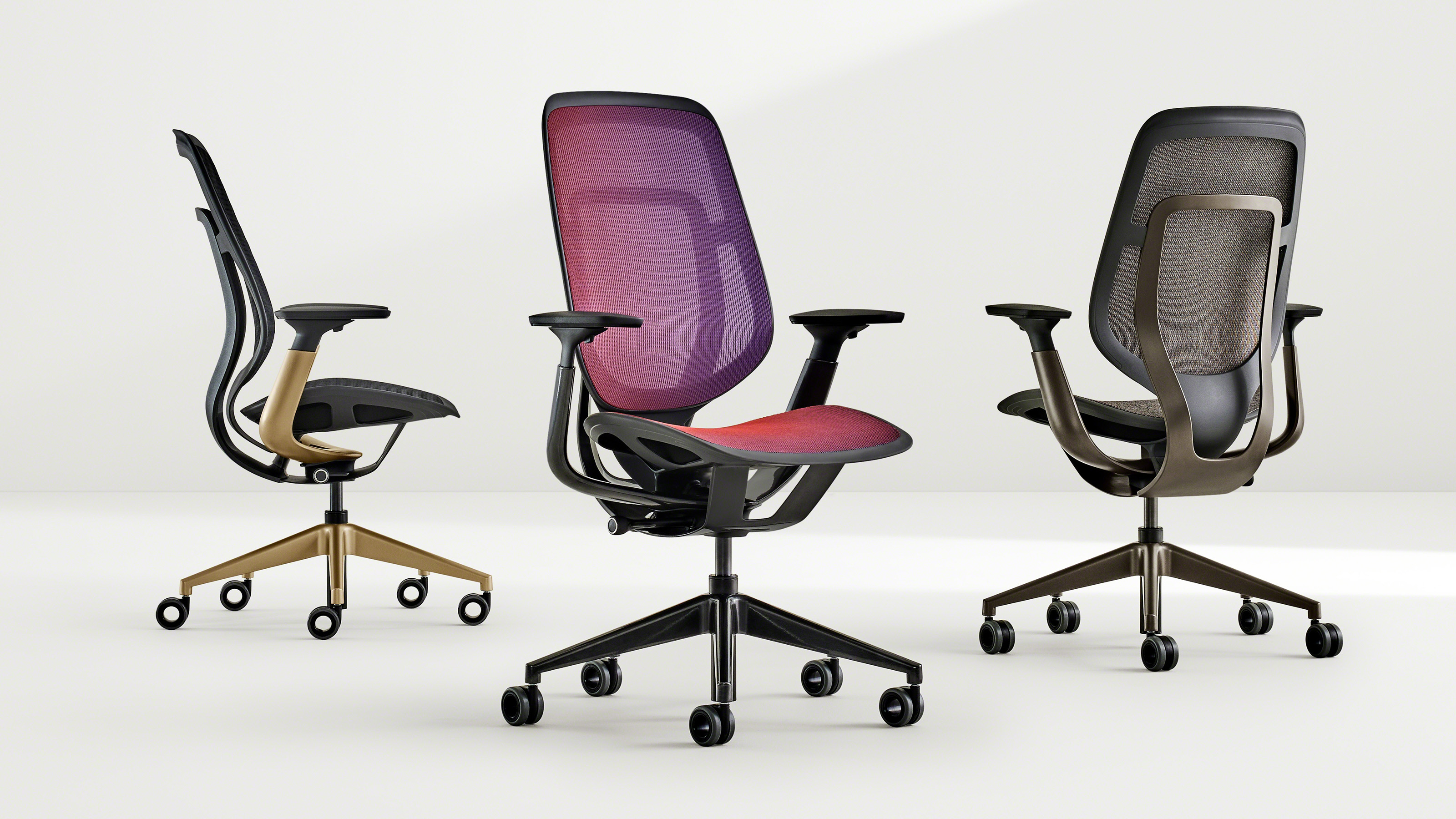
Beyond Comfort
Designing the seat for Steelcase Karman became a primary focus for the team as they worked to create a new level of comfort. “When you’re sitting, regardless of what posture you’re in, you’re always in contact with the seat,” Ludwig notes. “People talk a lot about back pain, but if you think about it, that pain is often because of your glutes or hamstrings or your core. It’s a systemic issue. That’s why the seat was so important.”
Dozens of prototypes and testing culminated in Steelcase Karman’s one-of-a-kind patented hybrid seat that combines an all-new performance textile with integrated cushioning. Instead of a rigid frame that’s used in most mesh chairs, the team innovated a systemic design approach in which the textile is suspended from an ultra-light frame that flexes so it eliminates painful pressure points and puts less pressure on people’s backs and seats.
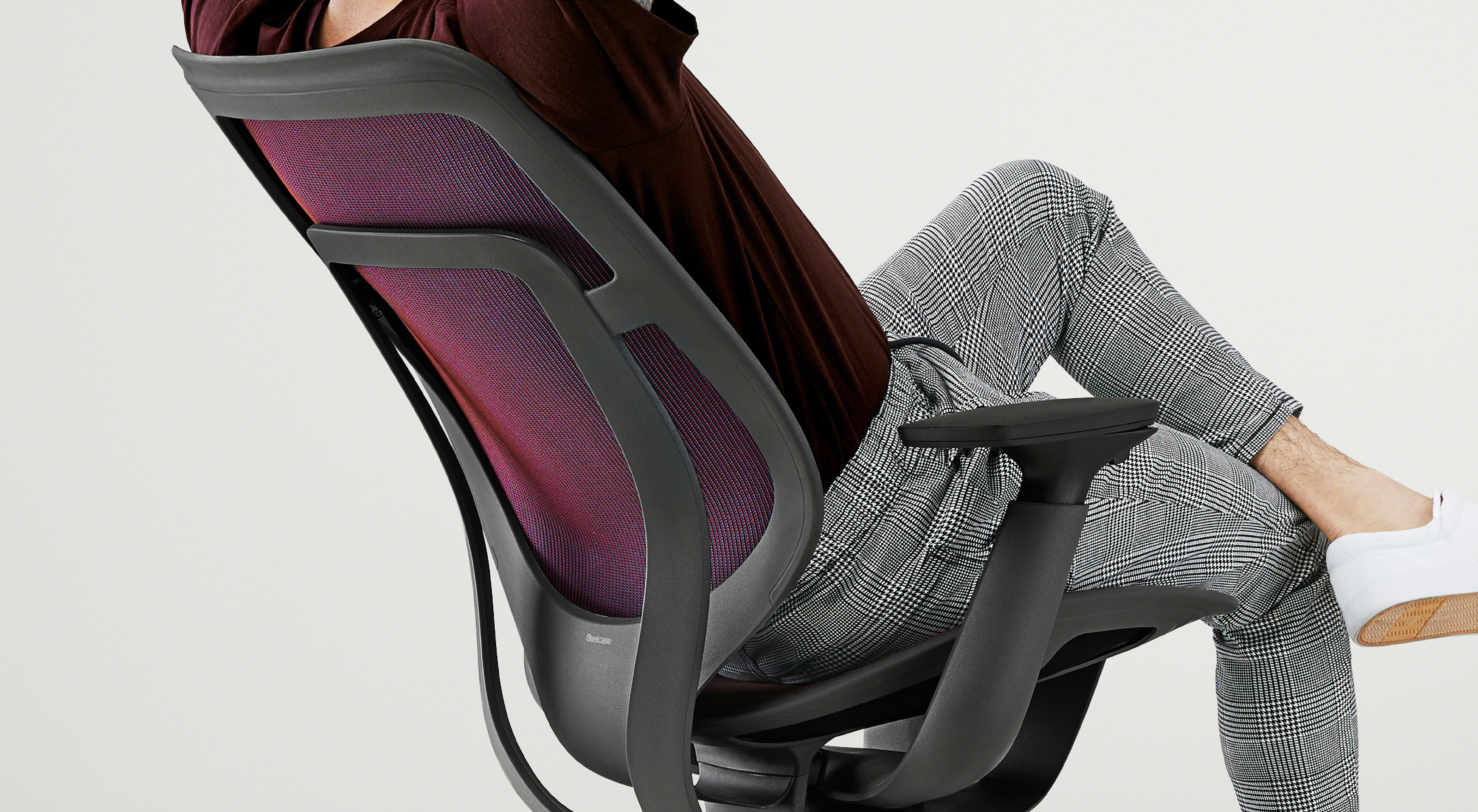
“Nature has been an inspiration for us throughout the process,” says Steelcase senior principal engineer Nick Deevers. “Both the seat and back have an organic flexibility that harmonizes with the movement in the lower frame. We were going for a level of fluidity that didn’t exist before. Your body has that fluidity. When you’re in this chair, it follows you. And that’s just like nature.”
Beyond Mesh
Creating the level of comfort the team wanted with existing mesh materials wasn’t possible. “People like the air circulation, lightness and liveliness of mesh,” says Ludwig, “but we were concerned about the performance. Mesh seats can behave like a hammock where all the weight is in the center. We didn’t want to work with mesh until it could deliver a true performance benefit.”
After countless hours of collaboration and experimentation, the team created a new proprietary performance textile called Intermix, which uses patented Shrinx Technology. They developed an exclusive weave that creates ideal ergonomic support so it never sags or feels stiff. “Intermix is a self supporting textile with spring, rebound and total stability,” says Gordy Peterson, the senior principal engineer, who helped co-create the new textile. “It distributes your weight evenly over the seat and back, flexing to your movement and fitting the contours of your body perfectly.”
The combination of Intermix with a flexible frame that eliminates stiff edges means people can comfortably sit any way they want. They can lean or sit sideways and feel less pressure on the seat and back, which isn’t possible with many other mesh chairs.
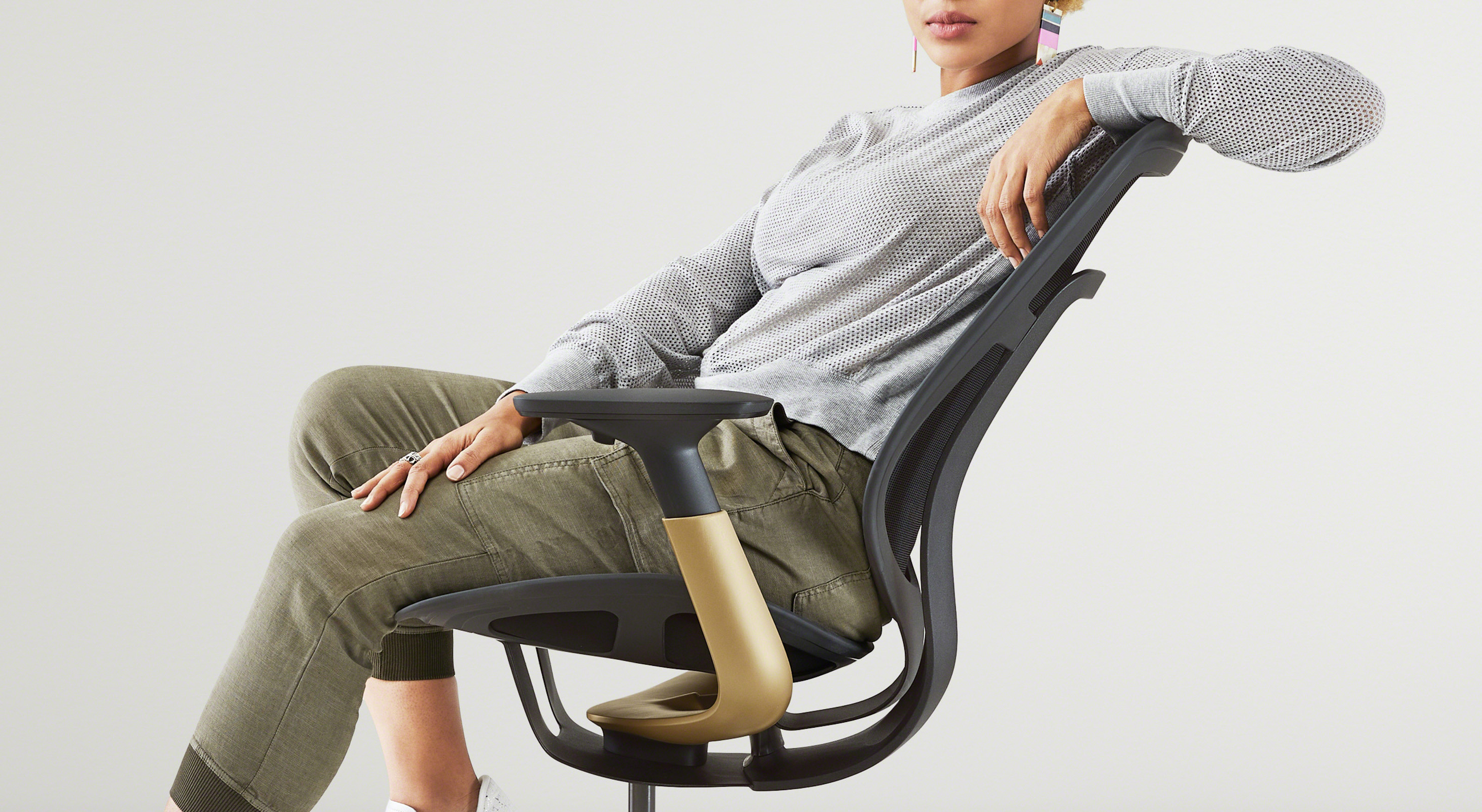
“Look at people when they’re working — they’re not sitting in one perfect posture, they’re moving all over the place,” says Ludwig. “Fidgeting is actually not a bad thing. It’s human. It’s ergonomic. A chair may be comfortable for the first few minutes, but what’s comfortable for extended periods of time is unique for each of us.”
“Intermix also has a beautiful hand feel,” notes Julie Yonehara, a senior industrial designer at Steelcase. “When you’re trying to create something so close to the human body, we needed this to feel comfortable, not abrasive.” The unique weave not only offers comfort and performance but it also allowed the team to create what Yonehara calls “a platform for diversity and expression.” The filaments can be spaced close together to create an opaque version of Intermix, or further apart to create a transparent, more traditional mesh look. Using multiple colors in the weave creates the appearance of a color shift when looking at the chair from different angles. “It was inspired by athletic performance wear, really highlighting the dynamism of it,” she notes.
Steelcase Karman offers an industry-leading color range, with 13 proprietary Intermix colors and a variety of Lux finishes, which makes infinite aesthetic options possible. “We wanted to go beyond the basic black, white and gray to create styles from monochromatic modern, residential luxury or anything in-between,” says Yonehara. “There’s a lot of choice, but there are also a lot of smart, curated options. We want this chair to fit in everywhere.”
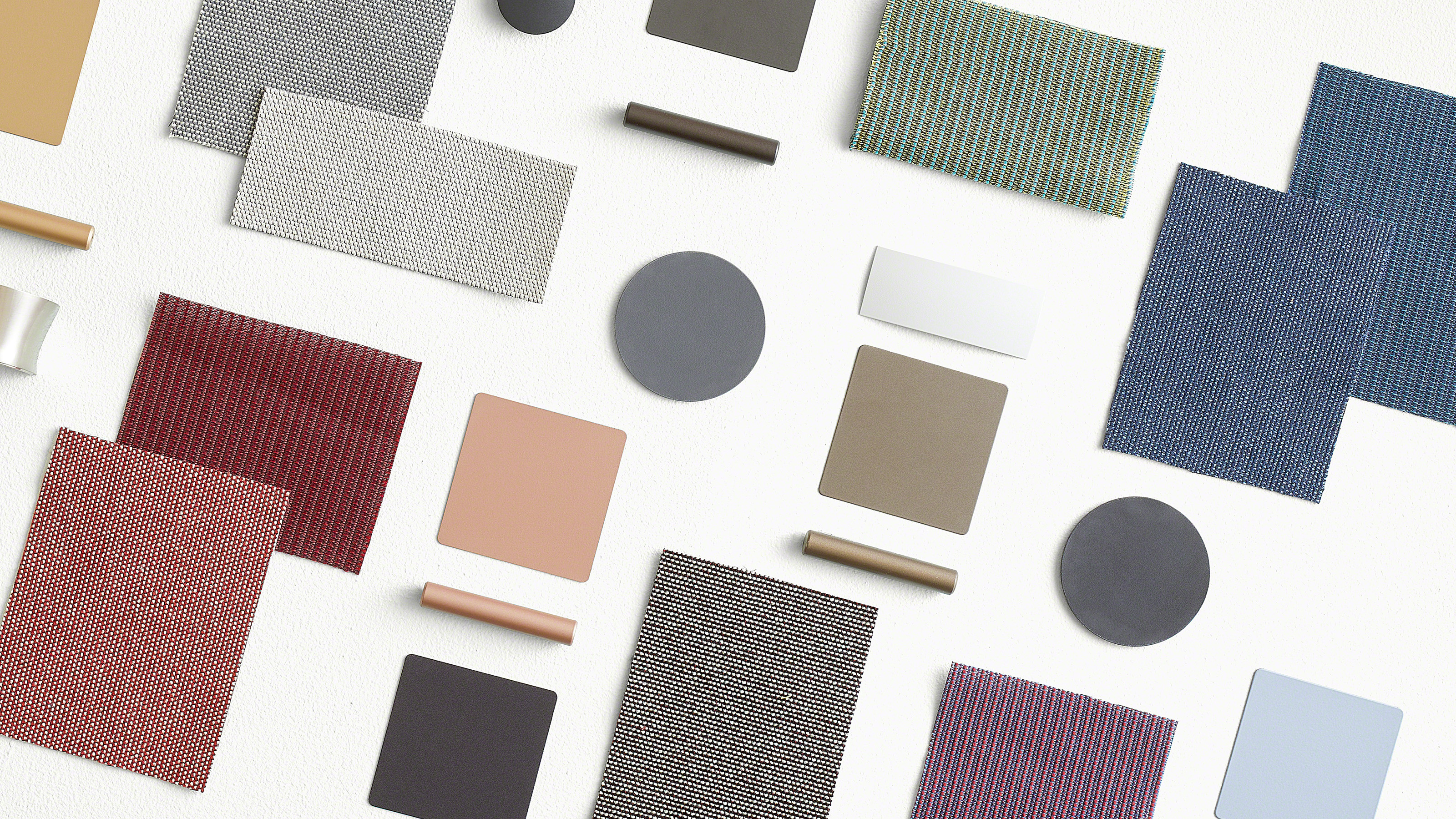
Beyond Convention
Responsible design is integral to the Steelcase design team so Steelcase Karman was designed with the planet and the future in mind. Ludwig, who is a member of the Circular Design Leaders group, advocates a design philosophy — whether it’s for a chair, building or entire city — of shifting from complexity to simplicity. “People want to experience things that are more intuitive, that incorporate fewer materials and use less resources,” he notes.
Steelcase Karman not only uses sustainable materials, it’s also comprised of the least number of components necessary. Because the design approach uses physics to create responsive movement, the team was able to design it at a weight of only 29 pounds – less than many leading mesh chairs. And yet the engineering of Steelcase Karman makes it incredibly strong. “We kept saying ‘what is the simplest thing we can imagine,’” adds Deevers. “Nature is efficient, so this needs to be minimal and efficient too.”
